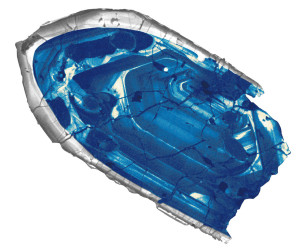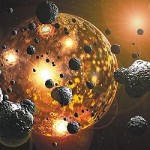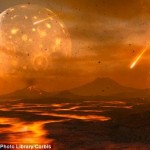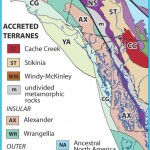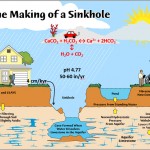Small and unimposing at just fractions of a millimeter across, the igneous silicate mineral zircon (ZrSiO4) lays its claim to fame as the oldest earth material at 4.4 billion years old. The secret to zircon's success is its durability and tenacity. When other minerals break apart or turn into other minerals, zircon bravely trudges on. My former professor, Dr. Alex Glass of Duke University, described zircon as "the thing that never leaves," comparing zircon to a person who awkwardly remains at a house party long after all the other guests have left. He suggested that rather than diamonds, zircons should be the ultimate symbol of everlasting love.
Zircon
These features make zircon so useful in providing information about the ancient Earth:
- Contains uranium, so it can be dated
- Is very unreactive
- Is very hard and durable
- It has Moh's of 7.5; compare to quartz at 5.5
- Withstands high pressures and temperatures
- Can have rims that provide dates for alteration events
- Core date reveals when zircon formed from magma
- Rim dates reveal when zircon experienced high pressure (e.g. burial)
- Is ubiquitous
- Forms in igneous rocks
- Occurs as detrital grains in sedimentary and metamorphic rocks
- Oxygen isotopes can reveal hydrothermal alteration
- Provides information on when oceans appeared
- Trace element contents can reveal crystallization temperatures and the composition of the magma that it crystallized from

